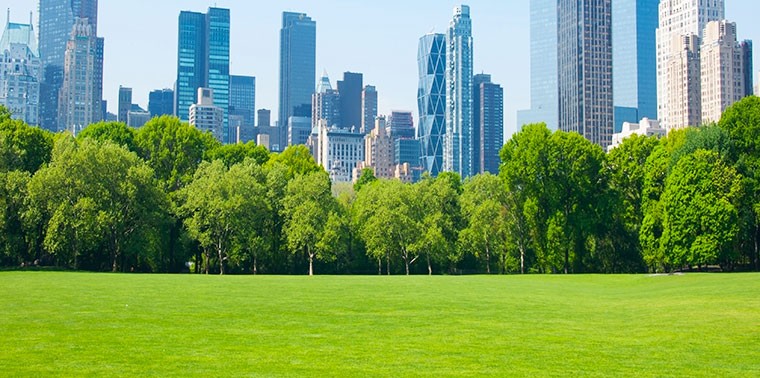Those who live in a city are automatically more likely to face mental illness. There’s a 40 percent higher risk of depression, a 20 percent higher risk of anxiety, and double the risk of schizophrenia. Furthermore, there’s a sense of isolation, loneliness, and stress that comes only from living in a city. Given these facts, researchers have been studying the effects of living in or near green space for quite some time, but a particular study from Denmark is giving more answers to questions about how environment might influence our mental health.
Research from “Residential green space in childhood is associated with lower risk of psychiatric disorders from adolescence into adulthood” in the Proceedings of the National Academy of Sciences of the United States of America was done in a nationwide study by researchers from Denmark’s University of Aarhus. It shows that green space — like public parks or community gardens — specifically helps in childhood and helps reduce the risk of the above issues in adolescence and adulthood. They used data from the Landsat satellite archive and the Danish Civil Registration System to track the residential green space around nearly one million Danes, and they correlated that data with their mental health outcomes.
According to the NASA Earth Observatory, the researchers found that “citizens who grew up with the least green space nearby had as much as a 55 percent increased risk of developing psychiatric disorders…” Although researchers don’t know why green space is so beneficial, it is clear that it provides physical and mental health benefits. Green space encourages exercise, provides space for socializing, and decreases noise and air pollution, all of which are positive health benefits for the general population. It also helps with psychological restoration, mood disorders, depression, neurotic behavior, and stress. They also found that green space is dose-dependent, meaning those who spend more time in public green spaces have greater health benefits.
Although researchers have given ample evidence to show that green space in cities benefits the population’s health, other factors also play a part. Socioeconomic status, family history of mental illness, and urbanization also all have large effects on one’s mental health. For example, San Francisco’s Urban Forestry Plan shows that tree canopy varies depending on the wealth of different communities. The villas in the Seacliff neighborhood have a 30% canopy cover, while historically lower-income communities in the Mission and Outer Sunset neighborhoods have around 5-7.5 percent tree canopy cover.
With the effect of other factors in mind, researchers needed to isolate the effects of nature from said potential factors, so they needed a large data set. “We decided to use Landsat data because it was free, high-resolution, and covered Denmark back to 1985,” lead author Kristine Engemann of Aarhus University explained.
Many are suggesting that communities install green areas for the specific purpose of benefiting the residents. Although it’s a good idea, it would have negative effects that some are not taking into consideration. Installing and maintaining green spaces would come at high costs, which low-income communities may not be able to afford. For example, New York City’s restoration of Prospect Park raised real estate values and attracted wealthy residents, subsequently driving away poorer residents.
Taking income disparities into consideration, it’s easier to see how green spaces will have more benefits for the rich. Low-income residents are more likely to live in hotter neighborhoods and to be exposed to higher levels of air pollution. As urban forests can help improve air quality if properly designed, they also help with health outcomes during the pandemic. Studies done at Harvard University are showing that there is a direct correlation between increased air pollution and high fatality rates from COVID-19.
Although there’s substantial data to support the claim of green spaces being beneficial, there are still struggles and questions. Are forests more impactful than the occasional park? Do you need to use these spaces or is growing up near them enough? Why does growing up near green space help? These are all questions Engemann hopes future studies can answer.






Be the first to comment on "Green Spaces in Cities Are Good for Mental Health"